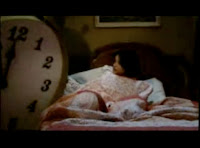Alvin Ailey American Dance Theater back in Montreal
By me!
It took 25 years for the Alvin Ailey American Dance Theatre to come back to Montreal, but only a few minutes to get the public transported far, far away last Thursday.
It was the first of three performances by the world-acclaimed New York-based company at the Salle Wilfrid-Pelletier of Place-des-Arts. They were presenting two of their touchstone pieces: "The River" and "Revelations," created by the deceased Alvin Ailey himself, as well as the 2005 "Reminiscin'," choreographed by artistic director and former company star Judith Jamison.
From the moment he created the company in 1958, Alvin Ailey took pride in honouring African-American culture by creating choreographies that incorporate elements of all types of dance traditions such as ballet, jazz, modern dance and cabaret for his multi-ethnic dancers. While "The River" was the result of a collaboration with jazz figure Duke Ellington, who composed its music, "Revelations" became a fundamental piece for African-American dance, displaying black people's relation to religion in their struggle against oppression. It's hard to imagine what it was like for a Texas-born black artist to present such a creation in 1960, but seeing it performed 45 years later in front of a mostly well-off white audience makes one realize how Ailey's work is timeless.
Going beyond the barriers of ethnicity, the show delivered an impression of joy, faith and intense communion. The link between the dancers seemed almost physical as they evolved as a whole; shivers ran down my back as the dancers, in line, held each other's hands and actually became "The River," not even trying to imitate it. Core members of the direction team, such as Judith Jamison and associate artistic director Masazumi Chaya danced for Ailey for years before carrying on his work. Some dancers have been there for up to 25 years and others graduated from the Ailey School.
It's a delight to see the dancers evolve on stage. Their bodies are curved and athletic, their gestures are nervous and passionate. Dancing in "Revelations", they bring one of the best companies in the world to a popular level and remove all the elitism usually associated with modern dance.
The popularity that the company benefits from allowed it to extend its activities. The Alvin Ailey Dance Foundation, which was already sheltering the Ailey School, now administrates another company, Ailey II, as well as the Ailey Extension, which offers dance courses to the public. It gathered enough donations to build in the heart of Manhattan the largest facility dedicated to dance in the United States, from which it operates since 2004. The Ailey name is now synonym of financial prosperity, something rarely seen in the world of dance.
The Concordian, February 28, 2007
Now you can compare to this one:
Fiery dance performances light up Place-des-Arts
Alvin Ailey Dance Theatre starts the night off small only to end with a blast
By Sylvain Verstricht
When performers from the Alvin Ailey American Dance Theatre danced in front of a projection of flames last week at Place des Arts, the image could not have been more fitting. It has been mentioned that the New York company moves as if their bodies are on fire and their souls hang in the balance. Surprisingly, one could not have guessed that so much energy would be carried throughout the show.
The troupe opened the night with “The River,” a fruit of a unique collaboration between choreographer Alvin Ailey and musician Duke Ellington, who composed a score with the dance in mind back in 1970. Within the context of an entire evening, this work functions much better as an introduction to the dancers than as a full-fledged piece. While the work does display the dexterity and near-perfect technique of the dancers, the body movement proves to be highly redundant.
Artistic director Judith Jamison’s “Reminiscin’” does not offer much hope of improvement at first glance. Using an episodic structure which spans across the three works, performers embody characters in a bar setting and dance to a series of pop songs. The setup feels amateurish and this feeling only gets reinforced when a woman pulls out a yellow basket after dancing to Ella Fitzgerald’s “A Tisket A Tasket.” When Diana Krall’s cover of Joni Mitchell’s classic “A Case of You” then came on, I almost expected the dancers to pull out a case of Labatt Blue.
But alas, no beer appeared. On the contrary, it is with this number that everything turns on a dime. Though it is difficult to identify individual dancers in a work for 12 people, I believe it is Adam McKinney’s performance that is responsible for this transformation. While all dancers are indisputably skilled, with him the body speaks beyond its movement.
What was previously missing in “A Case of You” becomes clear; it was emotion, that concept that is so elusive, yet so undeniably visible when it is present. And it is positively contagious. McKinney breathes life into all the dancers who come into contact with him.
The finale returns to company founder Ailey for “Revelations” and suddenly the dancers are on fire. Their bodies are open to the light that shines from above. Their arms are spread wide, their hands lifted to the skies. The positive energy is beaming as they dance to traditional music such as “Wade in the Water.”
And, much like McKinney’s emotion is infectious with the dancers, this positive energy similarly spreads to the audience. The crowd showed such appreciation when the curtain came down that they were treated to an encore performance of “Rocka My Soul in the Bosom of Abraham.”
The Link, February 27, 2007
Did we see the same show?



